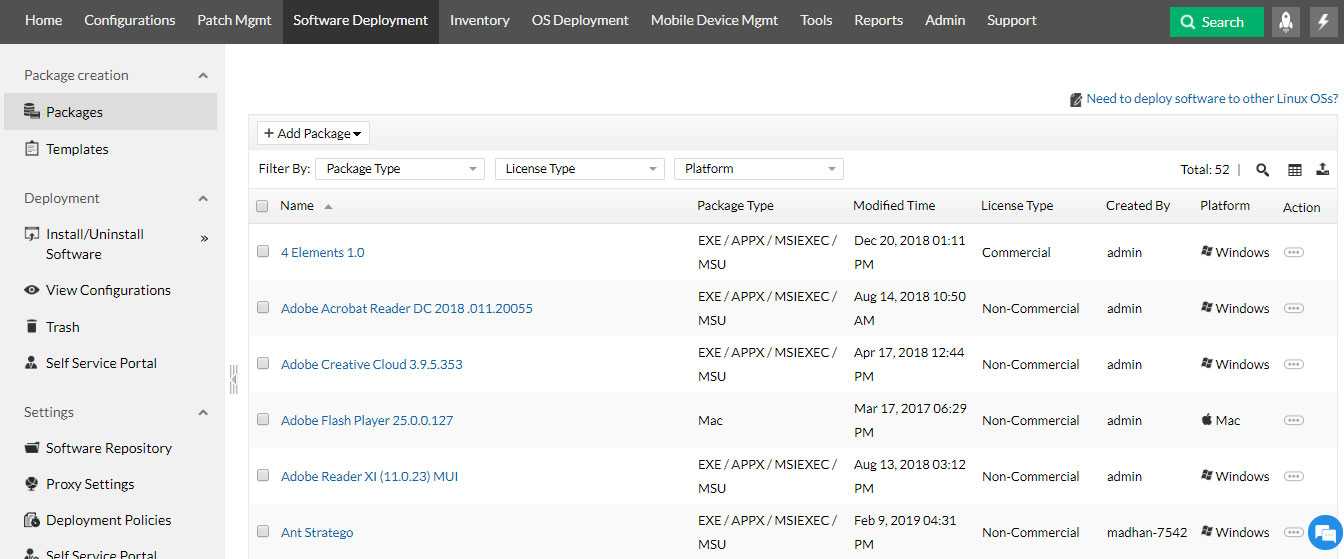
- #Deployment software for mac install
- #Deployment software for mac driver
- #Deployment software for mac full
- #Deployment software for mac software
- #Deployment software for mac plus
#Deployment software for mac install
However, from that point on is where there's a difference, because thin imaging tries to keep the overall image size down as much as possible by excluding many (if not most) of the apps to be deployed, choosing instead to install those through other avenues, such as Apple Remote Desktop or Deploy Studio workflows. Thin shares similarities with thick in that both imaging concepts aim to deploy the OS in a configured state with the latest updates. Thin imaging is the leaner, more efficient sibling to thick imaging.
#Deployment software for mac software
No post-deployment updates or software installs are required, because the image has everything it needs. This is commonly referred to as a "golden image," since it's designed with the thought that it will contain every last piece of data necessary to get the computer up and running in a ready-to-use state.
#Deployment software for mac full
The captured image represents a full set of files and folders, data, applications, settings, configurations, and system files, including updates that create the complete, working computer to which all others will be cloned to work just like the original master computer. Once this has been confirmed, a bit-for-bit image of the computer's hard drive is captured and used later during the imaging phase to deploy Macs.
#Deployment software for mac plus
However, the actual software installation and settings configuration are handled after the device performs its first boot, using any number of 1st and/or 3rd-party deployment suites or scripting to achieve the desired result of deploying a production-ready computer without any of the cruft carried over from a previously cloned desktop.Īlso known as ghosting or cloning, thick imaging relies on a master computer to be effectively configured by the sysadmin, with all software packages installed, plus configurations modified and tested to ensure the machine is working 100% as it should be. No cloning whatsoever is used to deploy the OS, which results in a clean, never-before-booted OS X installation that is (for all intents and purposes) identical to the user experience that you'd initially achieve in starting up an off-the-shelf Mac. Deployment methodsīy definition, this method is simply an OS installer that loads the initial OS or uses the existing OS that comes pre-installed when purchasing new equipment. We'll also examine the relative benefits that may be gleaned from changing out a deployment style for another, including employee productivity, downtime, and impacts on the network. Let's begin by taking a look at each method, and then we'll drill down further into what makes them work well (and not so well) for certain environments. These exist in stark opposition to the everything-but-the-kitchen-sink mentality prevalent with thick imaging. This is close in concept to thin imaging, which contains the basics necessary to get the system operational, along with a few apps, and is usually restricted to required agents and settings. Interestingly enough, no imaging means just that: no cloning of any kind. There's also a growing trend taking a cue out of the BYOD playbook that advocates no imaging. However, as was recently brought to my attention by several astute readers, the deployment of computers and their relevant software applications are divided beyond the traditional thick vs. With its advanced collection and visualization of data NetSpot provides its users with a comprehensive and complete WiFi site survey solution.In the past, I've espoused upon the timesaving, work-reducing benefits of imaging or cloning desktop computers for use in deploying new or refreshed equipment.
#Deployment software for mac driver
With all this work done well the wireless signal is less likely to spill outside, where a war driver can get their hands on it. With NetSpot one can also check the security settings (Open, WEP, WPA/WPA2 Personal/Enterprise), non-broadcasting SSIDs and WiFi signal strength. NetSpot is a perfect helper for network security specialists in locating and eliminating rogue access points, detecting unauthorized workstations, avoiding cross-channel interference and getting rid of false-positive intrusion alerts. Wireless Site survey is also an important part of wifi security analysis.

With the help of site survey you will know what type of equipment to get and where to install it. The main goal of a WIFI site survey is determining the feasibility of implementing a wireless network in a specific area and finding the best spots for access points and other equipment like cables and antennas. It will reveal areas of channel interference and dead zones, and will help you tremendously to build a solid network.

The effective way to obtain this information is a wireless site survey. When working on a Wi-Fi network that will provide an optimal coverage, you'll need a solid research and understanding the radio frequency behavior at the spot.


 0 kommentar(er)
0 kommentar(er)
